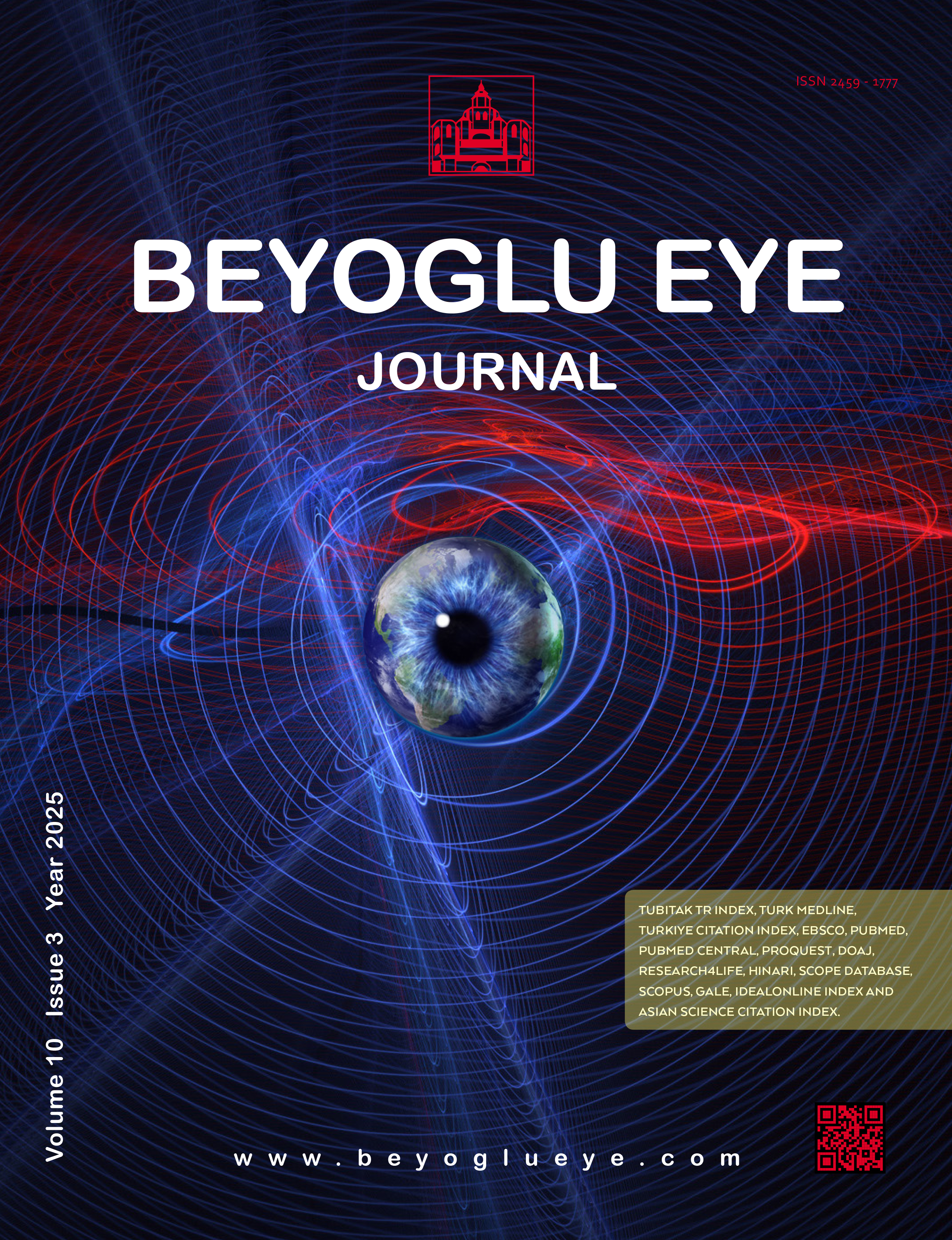
Evaluation of Eyelid, Angle, and Anterior Segment Parameters Using Scheimpflug Camera and Topography System in Obstructive Sleep Apnea Syndrome
İrem Işık1, Serpil Yazgan2, Fatma Erboy3, Mustafa Doğan41Department of Ophthalmology, Bülent Ecevit University, Faculty of Medicine, Zonguldak, Türkiye2Department of Ophthalmology, Inonu University Faculty of Medicine, Malatya, Türkiye
3Department of Thoracic Medicine, Bülent Ecevit University, Faculty of Medicine, Zonguldak, Türkiye
4Department of Ophthalmology, Afyon Kocatepe University, Faculty of Medicine, Afyon, Türkiye
OBJECTIVES: The purpose of the study was to investigate the eyelid hyperlaxity, anterior segment, and corneal topographic parameters in patients with obstructive sleep apnea syndrome (OSAS) using Scheimpflug camera and topography system.
METHODS: In this prospective and cross-sectional clinical study, 32 eyes of 32 patients with OSAS and thirty-two eyes of 32 healthy subjects were evaluated. The participants with OSAS were selected from those with an apnea-hypopnea index ≥ 15. The minimum corneal thickness (ThkMin), apical corneal thickness (ACT), central corneal thickness (CCT), pupillary diameter (PD), aqueous depth (AD), aqueous volume (AV), anterior chamber angle (ACA), horizontal anterior chamber diameter (HACD), corneal volume (CV), simulated K readings (sim-K), front and back corneal keratometric values at 3 mm, RMS/A values, highest point of ectasia on the anterior and posterior corneal surface (KVf, KVb), symmetry indices and keratoconus measurements were taken by combined Scheimpflug-Placido corneal topography and compared with healthy subjects. Upper eyelid hyperlaxity (UEH) and floppy eyelid syndrome were also evaluated.
RESULTS: There were no statistically significant difference between groups in terms of age, gender, PD, ACT, CV, HACD, simK readings, front and back keratometric values, RMS/A-KVf and KVb values, symmetry indices, and keratoconus mea-surements (p>0.05). ThkMin, CCT, AD, AV, and ACA values were significantly higher in OSAS group compared to the control (p<0.05). UEH was detected in two cases in the control group (6.3%) and in 13 cases in the OSAS group (40.6%) and the difference was significant (p<0.001).
DISCUSSION AND CONCLUSION: The anterior chamber depth, ACA, AV, CCT, and UEH increase in OSAS. These ocular morphological changes occurring in OSAS may explain why these patients prones to normotensive glaucoma.
Manuscript Language: English









